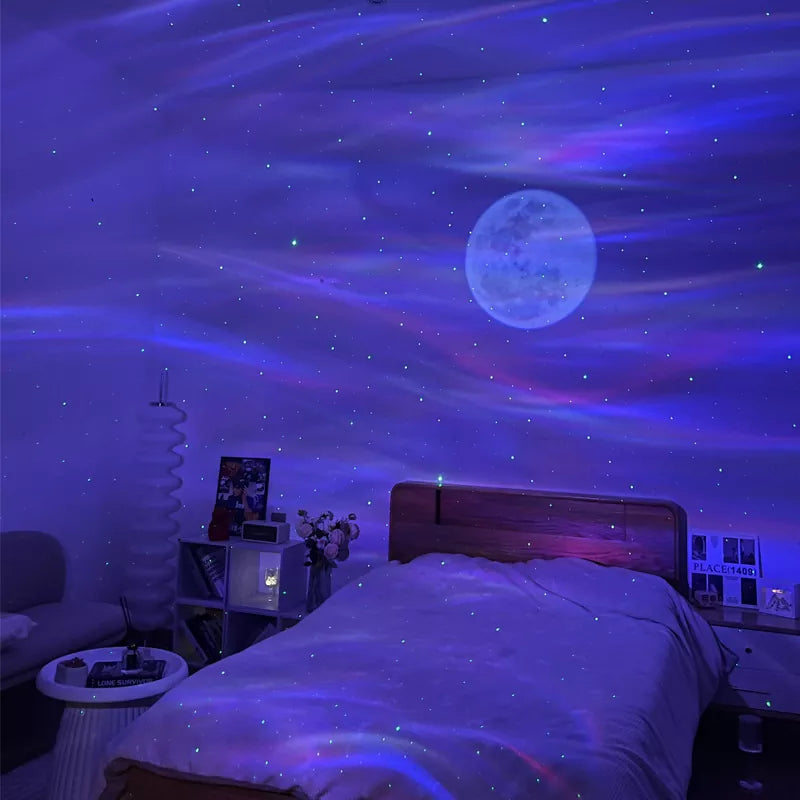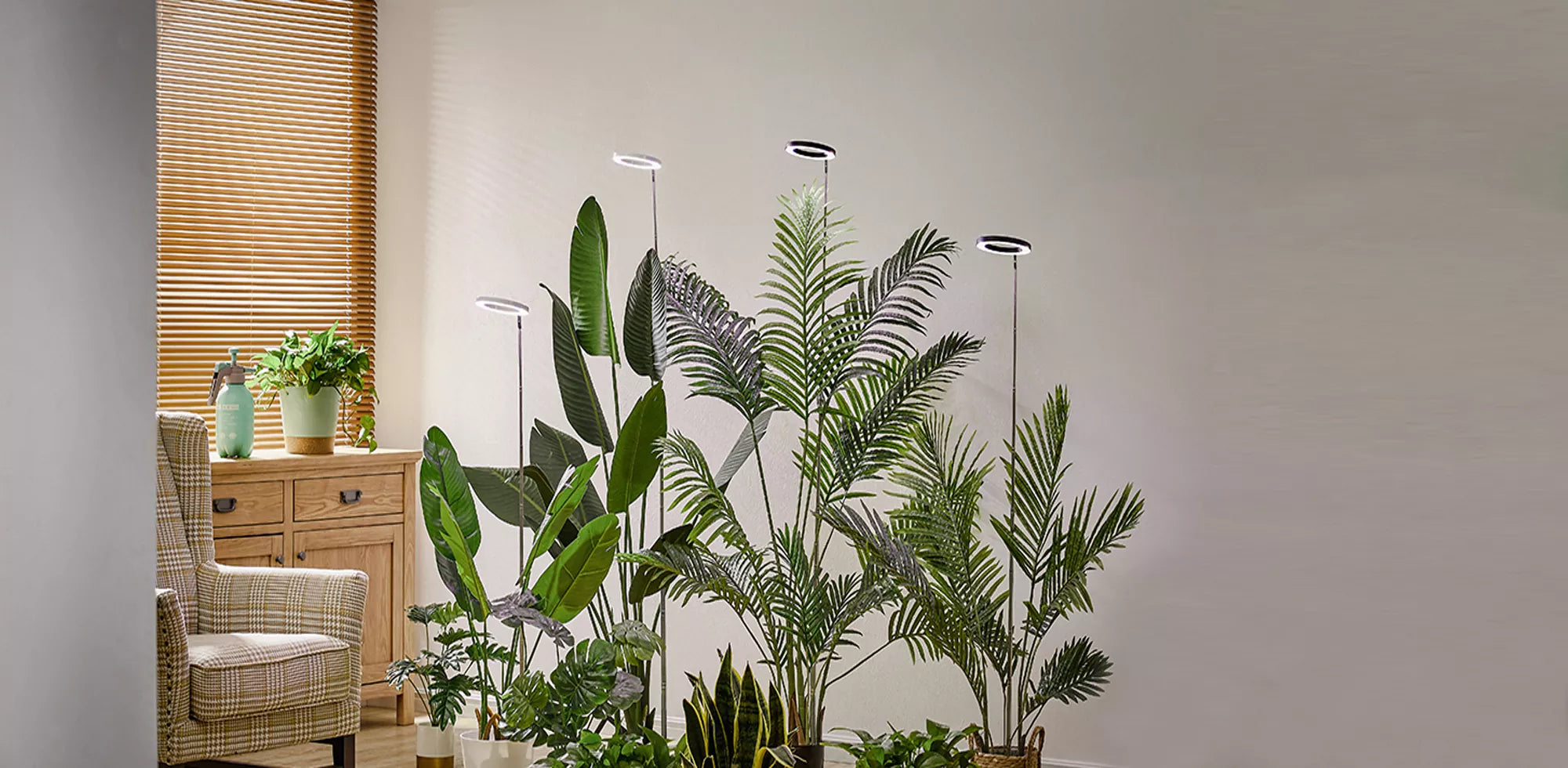Creating a sensory room at home is not about fancy equipment at all. It's about crafting a space that gives your brain a break.
A child with sensory needs, an anxious teen, or you after a tough work day: everyone can use a piece of mind with an effective sensory room. And in this blog, we will go through how to build one step by step.
Let’s get right into it. And yes, if you want to add instant calm, a starry sky light is a beautiful place to start.
Step 1: Choose the Right Space (No, Not the Kitchen)
Begin by choosing a space that is peaceful and has less “traffic”. This could be a spare bedroom, unused closets, or just any space where you throw out extra furniture.
The key is basically to pick a location that separates you from chaos.
Controlling natural light is beneficial; blackout blinds or curtains work wonders. Bonus points if it is away from TVs, loud dishwashers, and that neighbor who believes that it is okay to drill after 10 p.m.
Remember, peace begins with where you place it.
Step 2: Make It a Visual Escape
Your eyes need a break too. Visual elements that are calming are very important. You don't need to have a degree in interior design. You only need things that look good. For instance, soft shapes, muted colors, and soft lighting are best.
This is where the starry sky light comes in. This is a ceiling projector that casts galaxies across your walls in slow, dreamy motion.
It’s like sleeping under the stars, minus the bugs. The starry sky projector light is perfect for casting a soothing galaxy above, ideal for winding down after a long day.
Use this instead of harsh ceiling lights or glaring floor lamps. It gives your room a calm, continuous motion that is oddly hypnotic, in the best way.
Step 3: Let Them Touch Everything
Textures are your best friend in a sensory room. Give fingers, toes, and even forearms something to do. Furry rugs, bumpy mats, nubby pillows, silky throws. The goal is to offer gentle stimulation, not overwhelm. A mix of materials lets your brain stay engaged without going into overdrive.
Weighted blankets add a grounded, safe feeling. Faux fur offers comfort. A good sensory mat can invite bare feet to dance, slide, or just feel something different for once.
Touch is grounding; let it do its magic.
Step 4: Fill the Room With Calm Sounds
Silence is great. But soft, ambient sound? Even better.
Consider white noise machines, rainfall playlists, or a burbling tabletop fountain if you are feeling fancy. You want something that fills the air without stealing attention.
Bluetooth speakers work well too, especially if you like to customize your playlists to match your mood (rainforest one day, Tibetan bowls the next). Sound helps anchor your thoughts. It is like a gentle “shhh” for your brain.
Step 5: Invite Movement, Gently
Stillness is not always the answer. Sometimes your body needs to rock, sway, bounce, or just move. A sensory room can support that with a few thoughtful additions:
-
A rocking chair to soothe nerves and bodies alike.
-
A therapy ball for core engagement and subtle motion.
-
A hammock swing, if your ceiling can handle it.
Gentle movement reduces anxiety and helps release pent-up energy. If kids are involved, this section becomes crucial. But even adults find rhythmic motion surprisingly comforting. You might be surprised how much a slow sway helps you reset.
Step 6: Breathe Deeply (and Smell Something Lovely)
Scent is underrated. It is the fastest way to the brain’s emotional center. That is why aromatherapy can completely shift a space.
Diffusers are your go-to tool here. Essential oils like lavender, eucalyptus, or sandalwood can fill the room with a soft, natural fragrance. Just be sure not to overdo it. Think “gentle spa” not “headache in a bottle.”
Opt for adjustable intensity diffusers, especially if multiple people will be using the space. Scent sensitivity is real; always test first.
Step 7: Give Hands Something To Do
Fidgeting gets a bad rap. But in a sensory room? It is encouraged. Have a basket (or three) filled with tactile tools. Great options include:
-
Stress balls
-
Textured silicone toys
-
Kinetic sand
-
Therapy putty
-
Squishy animals
These help with increasing focus, regulating emotions, and just providing a sense of calmness.
Also, they are not just for kids. Adults fidget too. However, some of us just disguise it as “working from home.” Keep these tools within reach so anyone can grab whatever they need without having to leave the sensory room.
Step 8: Keep It Simple
Your sensory room shouldn't look like a toy store that blew up.
Keep the layout simple and open. A messy room can easily overstimulate. You want clear paths and space to breathe. Furniture should be soft, not too high, and able to be moved when necessary. Bean bags, soft mats, and short tables are all good choices.
Think of it this way: your brain can relax more when it doesn't have to focus on as many things.
Step 9: Set Ground Rules
Last but not least, make the space sacred.
Set a few simple rules that will help the room stay focused and work well. These could be:
-
No screens or devices.
-
Only one person at a time.
-
Use it when your emotions feel too “big”.
-
Keep your voices low or silent.
-
Always return the items back to their place after use.
While it sounds strict, these boundaries help the space remain comfortable at all times.
You should encourage regular use, especially during stress spikes. Over time, you will see how it becomes a reliable tool in your emotional toolbelt.
And Yes, You Deserve This Too!
We all carry stress in different ways. A sensory room is not just for children or neurodiverse individuals. It is a resource for anyone who needs a break. Whether it is five minutes of deep breathing under your starry sky light, or an hour curled up with a weighted blanket and rain sounds, the point is this:
Peace is something you can design, and deserve. Start small. Stay consistent. And remember, calm is not something you find. It is something you create.




